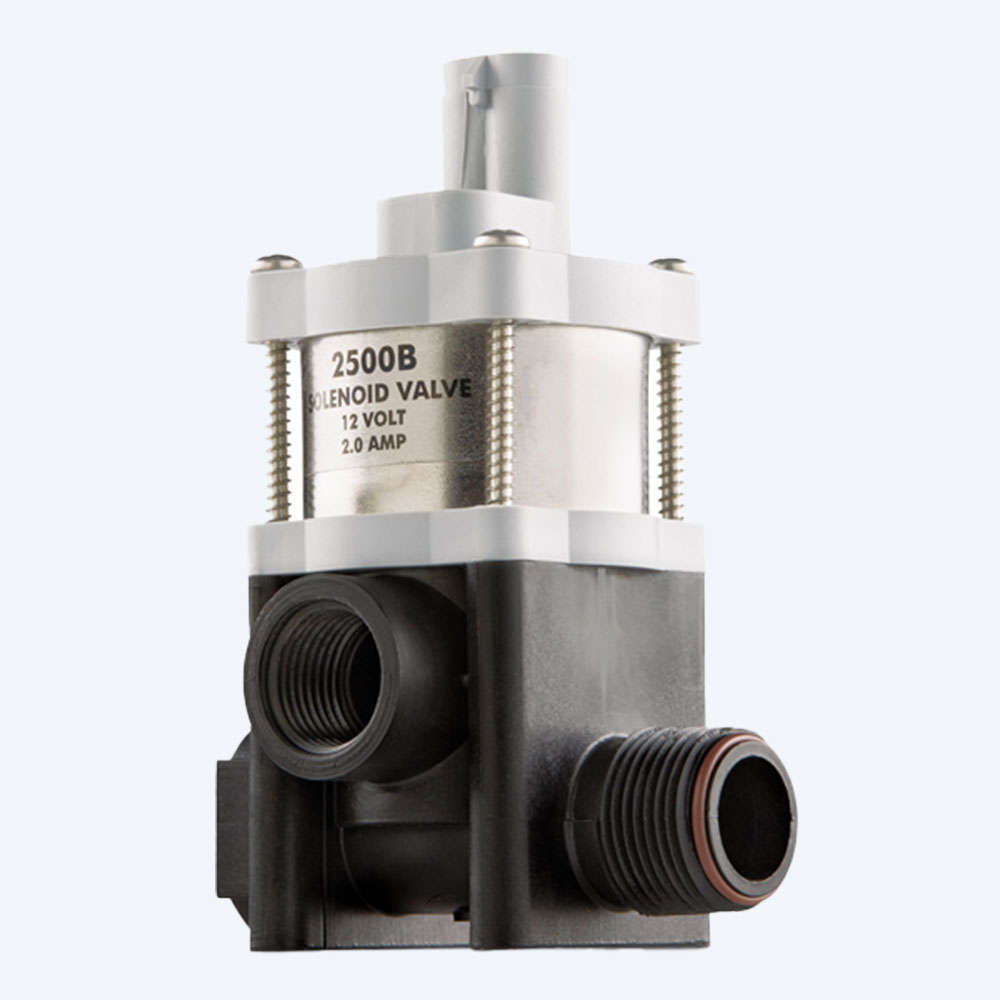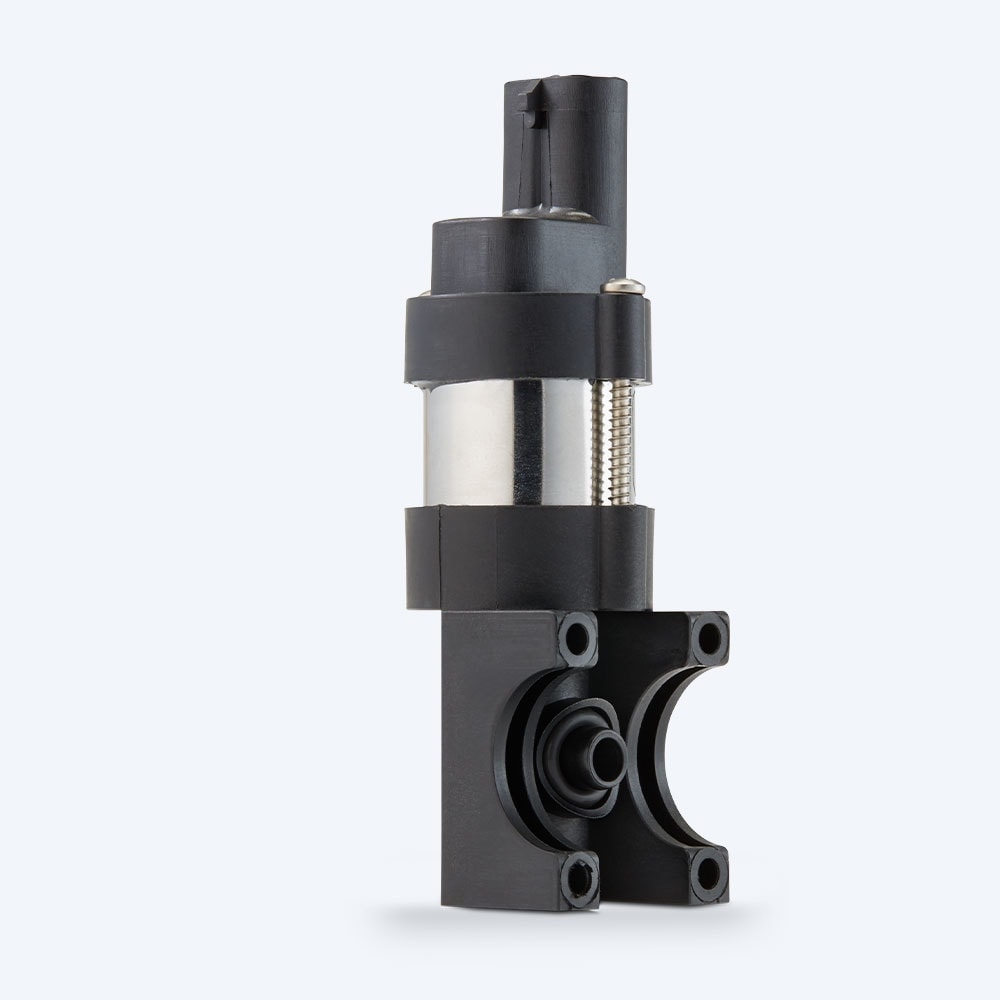Understanding Solenoid Valves
Basics of Solenoid Valves
A solenoid valve is an electrically controlled valve used to allow or prevent the flow of media through it. It operates by having a plunger move up and down based on the magnetic field generated from the electrical solenoid. Solenoid valves are commonly found in various applications, including water treatment, automotive, food processing, and many other industrial uses.
For middle-aged farmers looking to improve their crop spraying, understanding solenoid valves is crucial. These valves can be integrated into your spraying systems to provide precise control over the flow of liquids, ensuring efficient and effective application of pesticides and fertilizers. By automating the flow control, solenoid valves help in reducing manual labor and increasing productivity.
Working Principles of Solenoid Valves
Solenoid valves function by controlling the flow of liquids or gases in a positive, fully-closed or fully-open mode. These valves are often used to replace manual valves or for remote control. The plunger in a solenoid valve opens or closes the orifice by raising or lowering within a sleeve tube when the coil is energized (Bürkert).
Here’s a basic overview of how they work:
- Electrical Signal: An electrical signal is sent to the solenoid coil.
- Magnetic Field: The coil generates a magnetic field that moves the plunger.
- Plunger Movement: The plunger either opens or closes the valve orifice.
- Flow Control: This movement regulates the flow of the media through the valve.
For more detailed information on solenoid valves and their applications in crop spraying systems, check out our dedicated page on solenoid valves. Understanding the working principles of solenoid valves can help you make informed decisions about integrating them into your farming operations.
Types of Solenoid Valves
For middle-aged farmers looking to improve their crop spraying, understanding the different types of solenoid valves can greatly enhance the efficiency and effectiveness of your agricultural practices. Here, we explore three main types of solenoid valves: direct-acting, pilot-operated, and different valve configurations.
Direct-Acting Solenoid Valves
Direct-acting solenoid valves open the valve magnetically through direct action. The coil pushes and pulls a shaft to shift the valve seat. Direct-acting valves need full power to operate and their position (normally open or normally closed) depends on the application (The Hope Group).
| Feature | Description |
|---|---|
| Operation | Direct magnetic action |
| Power Requirement | Full power |
| Position | Normally open or normally closed |
Pilot-Operated Solenoid Valves
Pilot-operated solenoid valves utilize the pressure of the fluid in the line to open the valve, allowing for the use of a smaller coil and lower cost. However, they require available pressure to operate (The Hope Group).
| Feature | Description |
|---|---|
| Operation | Uses fluid pressure |
| Power Requirement | Smaller coil |
| Cost | Lower cost |
Different Valve Configurations
Solenoid valves come in various configurations, such as 2-way, 3-way, and 4-way, each serving different purposes like On/Off, venting, or combining media. The choice of valve type depends on your specific application requirements (The Hope Group).
| Configuration | Description | Common Uses |
|---|---|---|
| 2-Way | Two ports, simple On/Off | Crop spraying systems |
| 3-Way | Three ports, venting options | Combined media applications |
| 4-Way | Four ports, complex operations | Advanced agricultural systems |
For more details on how these valves work and their applications, you can explore what triggers a solenoid valve?.
Selecting the right solenoid valve for your crop spraying system is crucial. By understanding the differences between direct-acting, pilot-operated, and the various valve configurations, you can make an informed decision that enhances the efficiency and longevity of your equipment. For more information on solenoid valves, visit our detailed guide on solenoid valves.
Factors in Choosing Solenoid Valves
Selecting the right solenoid valve for your crop spraying system is essential for ensuring optimal performance and durability. Here are the key factors you should consider:
Seal Materials Selection
The sealing material of a solenoid valve is critical to its effectiveness and longevity. It must be compatible with the media flowing through the valve to prevent leaks and damage. Common seal materials include:
- NBR (Nitrile Rubber): Suitable for water, air, and light oils.
- FKM (Fluorocarbon / Viton): Ideal for chemicals, oils, and high temperatures.
- EPDM Rubber: Best for steam, hot water, and certain aggressive chemicals.
- PTFE (Teflon): Highly resistant to chemicals and temperatures.
| Seal Material | Compatibility |
|---|---|
| NBR (Nitrile Rubber) | Water, Air, Light Oils |
| FKM (Viton) | Chemicals, Oils, High Temperatures |
| EPDM Rubber | Steam, Hot Water, Aggressive Chemicals |
| PTFE (Teflon) | Chemicals, High Temperatures |
For more details on selecting the right seal material, refer to our guide on solenoid valves.
Material Composition
The material composition of the solenoid valve body is equally important. Each material offers different properties to resist corrosion and withstand the media it regulates:
- Plastic: Lightweight and corrosion-resistant, suitable for non-corrosive media.
- Steel: Strong and durable, but susceptible to corrosion if not properly treated.
- Brass: Corrosion-resistant and suitable for various media, including water and air.
- Bronze: Similar to brass but with higher resistance to corrosion.
- Aluminum: Lightweight and corrosion-resistant, suitable for various applications.
| Valve Material | Properties |
|---|---|
| Plastic | Lightweight, Corrosion-Resistant |
| Steel | Strong, Durable |
| Brass | Corrosion-Resistant |
| Bronze | High Corrosion Resistance |
| Aluminum | Lightweight, Corrosion-Resistant |
To learn more about the material composition of solenoid valves, visit our page on solenoid valves.
Environmental Considerations
The environment in which the solenoid valve will be used significantly influences its selection. Factors like temperature, exposure to the elements, and potential contaminants must be considered:
- Outdoor Exposure: Requires weather-resistant materials and proper sealing.
- High Temperatures: Needs materials and seals that can withstand heat.
- Corrosive Substances: Requires corrosion-resistant materials and seals.
- Explosive or Dusty Environments: Needs valves with appropriate IP ratings to prevent ignition and contamination.
- Moist Conditions: Requires waterproof materials and seals to prevent damage.
For example, using stainless steel or brass for outdoor applications ensures durability against the elements. Similarly, PTFE seals are ideal for valves exposed to corrosive chemicals. For further guidance on environmental considerations, check out our article on solenoid valves.
By carefully considering seal materials, material composition, and environmental factors, you can choose the best solenoid valve for your crop spraying needs. For troubleshooting and maintenance tips, refer to our section on what triggers a solenoid valve.
Maintenance and Operation
Maintenance Guidelines
Maintaining your solenoid valves is crucial for ensuring their longevity and optimal performance in crop spraying applications. Here are some key guidelines:
- Regularly replace any worn-out components and ensure that the valve parts are clean and free of debris. A proper maintenance routine ensures predictable valve operation and an extended life. (Tameson)
- The frequency of servicing a solenoid valve depends on its design and application. Some applications may require more frequent attention to prevent component wear. Proper lubrication can extend the component life up to millions of cycles. (Tameson)
- Generally, solenoid valves should be maintained every 6 to 12 months based on the application and manufacturer’s recommendations. (Tameson)
Troubleshooting Common Issues
If your solenoid valve is not functioning properly, such as being slow to open or close or making strange noises, it may require some troubleshooting. Here are common issues and their solutions:
- Slow Operation: This could be due to debris buildup or worn-out components. Regular inspections can help detect potential issues before they escalate. (Tameson)
- Excessive Noise: Noisy operation often indicates that the valve needs cleaning or that some components may be loose or worn out.
- Leakage: If your valve is leaking, it could be due to damaged seals or improper installation. Proper maintenance ensures predictable valve operation and extended life. (Tameson)
Optimal Operational Practices
To extend the life and maintain the consistent functionality of your solenoid valves, consider the following optimal operational practices:
- Build a maintenance schedule tailored to the solenoid valve’s use in controlling common media like air and water. This can significantly extend its life. (Tameson)
- Be aware of the response times for different types of solenoid valves. DC solenoid valves generally have slower response times than AC valves, with direct operating valves having response times between 5 and 50 ms, while indirect operated valves range from 50 ms for small versions up to 1500 ms for large versions. (Tameson)
For more detailed information, check out our articles on solenoid valves and what triggers a solenoid valve.
By adhering to these maintenance and operational guidelines, you can ensure that your solenoid valves perform reliably and efficiently, enhancing your crop spraying effectiveness.



